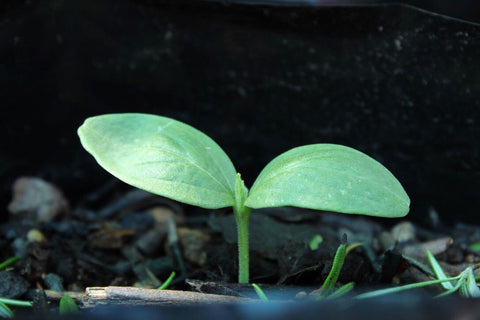Beginning a Veggie Garden: Step-by-Step Guide
For so many, the dream of stepping into your backyard or onto your patio to pick your own fresh and nutritious vegetables seems like a somewhat distant reality. Where to start? And what we will need in the process. We know the health benefits and joy that come with making this very achievable dream a reality, so I got together with Tyla Ordan, our very own gardening expert, and the brilliant mind behind our TikTok channel, to get the scoop on what goes into starting your veggie garden from scratch. Here’s her straightforward approach to making it happen.
Step 1: Basic Tools
The first step to starting a vegetable garden doesn’t involve any seeds or soil. The most essential tool for beginning your first veggie patch is pen and paper, believe it or not.
Before you go out to buy seeds, sit down for a few moments and start to plan your garden. All gardeners will write up a Garden plan for the season, knowing it will be a rough guide - at best.
Even if you don’t end up doing half of the things on your garden plan, it's time you spend thinking about the garden that will help you in the end.
When the green bug bites, you will be itching to get your fingers in the dirt, and if you’re like me, you will want to plant every seed you find. But having gone through that process, I would advise choosing a handful of plants to start with.

Step 2: Planning
A garden plan always starts with observation. Where will you be growing your veggies? How much light does the area get? How much space is there to develop? How deep is the soil?
Once you have a basic understanding of where you will grow, choosing the “what” is much more manageable; if your area is shady most of the day, you will have more success with leafy greens and shade plants.
If you have limited space, you could consider adding some support and growing your veg vertically. If your soil is shallow, you can look at veg with shallow roots. The area you are growing in will make many decisions for you.

Step 3: Choosing Plants
Now that you know what type of veggies you can grow, I would advise choosing two that you use most often - for me, that’s tomatoes and chilies. Choosing plants that you use often makes growing them so much more rewarding.
Once you have the two plants selected, you can start looking at other plants that grow well with your two plants. Look at companion plants (a plant that help your chosen plant grow better) and other plants that won’t compete for resources.
If you have selected a tall crop like tomatoes or peppers, you can combine them with low-growing crops like carrots and beetroot. Surrounding your plants with herbs will help them grow. Choosing herbs that you would eat with the plants you have chosen makes growing them together even more rewarding. For example, I grow basil, tomato, chili, and onion together, which makes harvesting them much more accessible.

Step 4: Planting
Once you have decided on your two chosen plants and a couple of companions, you can draw a rough map of where you will plant. This map will guide you as you grow your seeds, and if you forget to label your plants, it will also act as a reminder of where each crop is planted.

That’s the end of the planting; it’s time to get planting. You can buy seeds from a local nursery or go to the numerous online seed stores. The seed packaging usually displays all the information you need to know to grow the plants - like the planting distances and depths, the amount of light it requires, and the time it takes to germinate. If you follow the instructions, you will grow your own food in no time!












